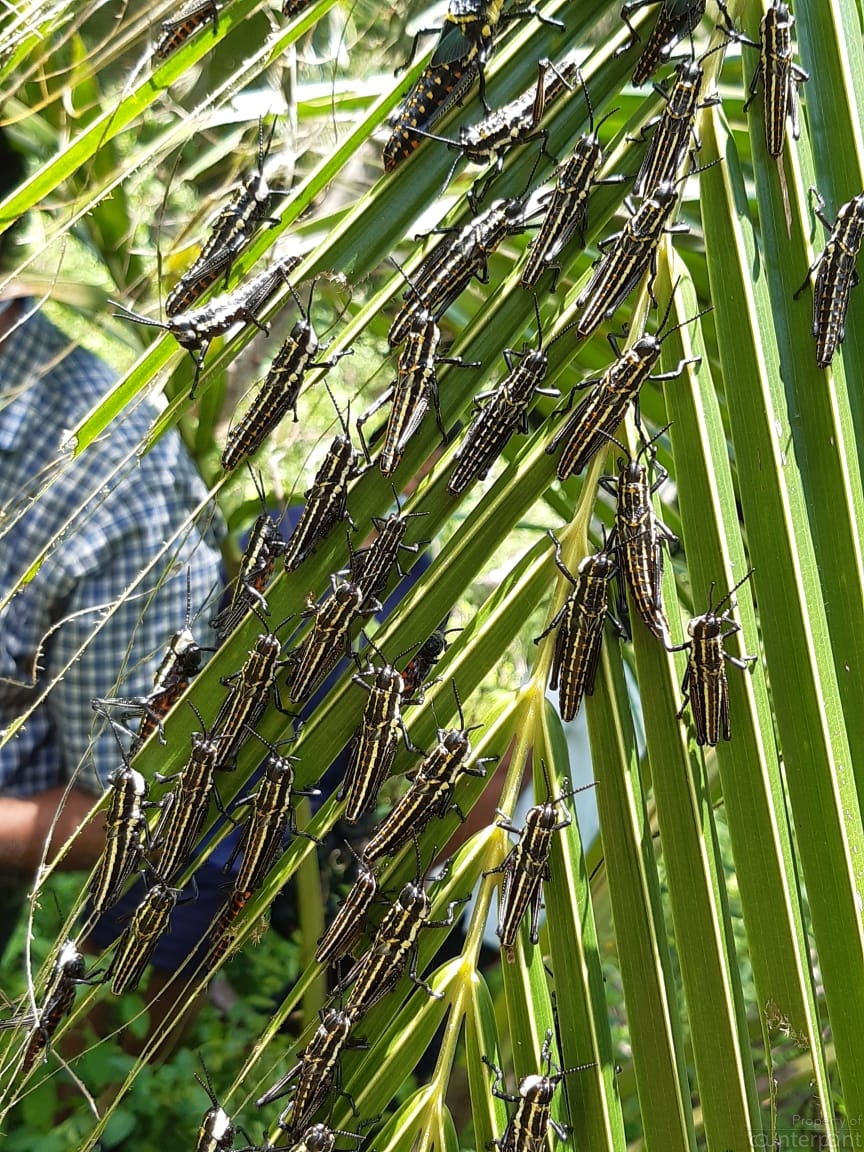The devastation that the Yellow Spotted Locust will leave behind will be worse than the destruction caused last year by the Sena caterpillar, warns Namal Karunaratne, the National Organiser of the All Ceylon Peasants Federation.
He explained that the Sena caterpillar had attacked a 100 plant species, but the Yellow Spotted Locust is known to consume 200 plant species including the leaves of coconut trees, corn, rubber and teak leaves.
“The yellow spotted locust can eat coconut leaves easily. If they can eat that leaf, which is very hard, there is no doubt that they can easily destroy other crops, Mr. Karunaratne pointed out.
The Yellow Spotted Locust has been seen in Sri Lanka previously. Endemic to the country it was seen in farm lands, however this is the first time that the locust population is being seen in the thousands.
First reported in areas in Kurunegala the swarms have now spread to Kegalle and has also been spotted in Matara and Hambatota.
In a bid to control the spread and destroy the locusts, the government has introduced a hotline, (1920), and has asked farmers and home garden owners to send information of sightings in their areas to the authorities via SMS.
Mr. Karunaratne added that the Sena caterpillar that attacked crops last year mostly targeted corn fields but the Yellow Spotted Locust is eating leaves of all plants.
“What it’s doing is cutting of the lifeline of plants and trees. When the leaves are gone the plants will die. We have to take this situation very seriously,” he said.
Deputy Provincial Director for the Department of Agriculture in Kegalle, Nilma Rajapaksha confirmed that the outbreak could be severe this year due to the extreme weather patterns caused by climate change.
Together with officials of the Disaster Management Center, the Department of Agriculture is attempting to stop the locust spread by spraying pesticides. The military has also been asked to be on standby in case their assistance is needed to destroy the increasing swarms.
But, Mr. Karunaratne cautions against the government using pesticides to destroy the locusts. The government must put in place measures to fight the pests in a natural way, he says, adding that “Using chemicals to kill the insects will cause more harm than any good.”
The Assistant Director of the Disaster Management Center in Kurunegala, Anura Viraj Dissanayake explained that, “Farmers have been also told to kill, set fire or smoke out the locusts if they see them in farmlands. We are doing our best to control this situation,” he added.
Mr. Dissanayake added that the locust variety Sri Lanka is dealing with at present, is not the same as the desert locust that is being seen widely in India at the moment. This insect we see here is different.
Farmers claim that they have not seen this many locusts before and are worried their harvest will be affected this year.
“I first saw this insect about three or four days ago. First, they were in small numbers but now the swarms are in thousands. I don’t know what to do about this,” farm owner, Jayantha Weerasooriya, a father of five from Katupitiya in Kurunegala, told Counterpoint.
Even though Sri Lanka is free from the desert locust, the authorities are bracing themselves for an invasion of those insects too. The desert locusts are currently destroying farmlands in India, having come to that country with the wind from Pakistan. Desert locusts usually live and breed in semi-arid and desert regions.
The Department of Agriculture warned that the desert locust could enter Sri Lanka with the winds. Bu,t the primary aim of the department is to tackle the spread of the local locust that is currently destroying crops.





